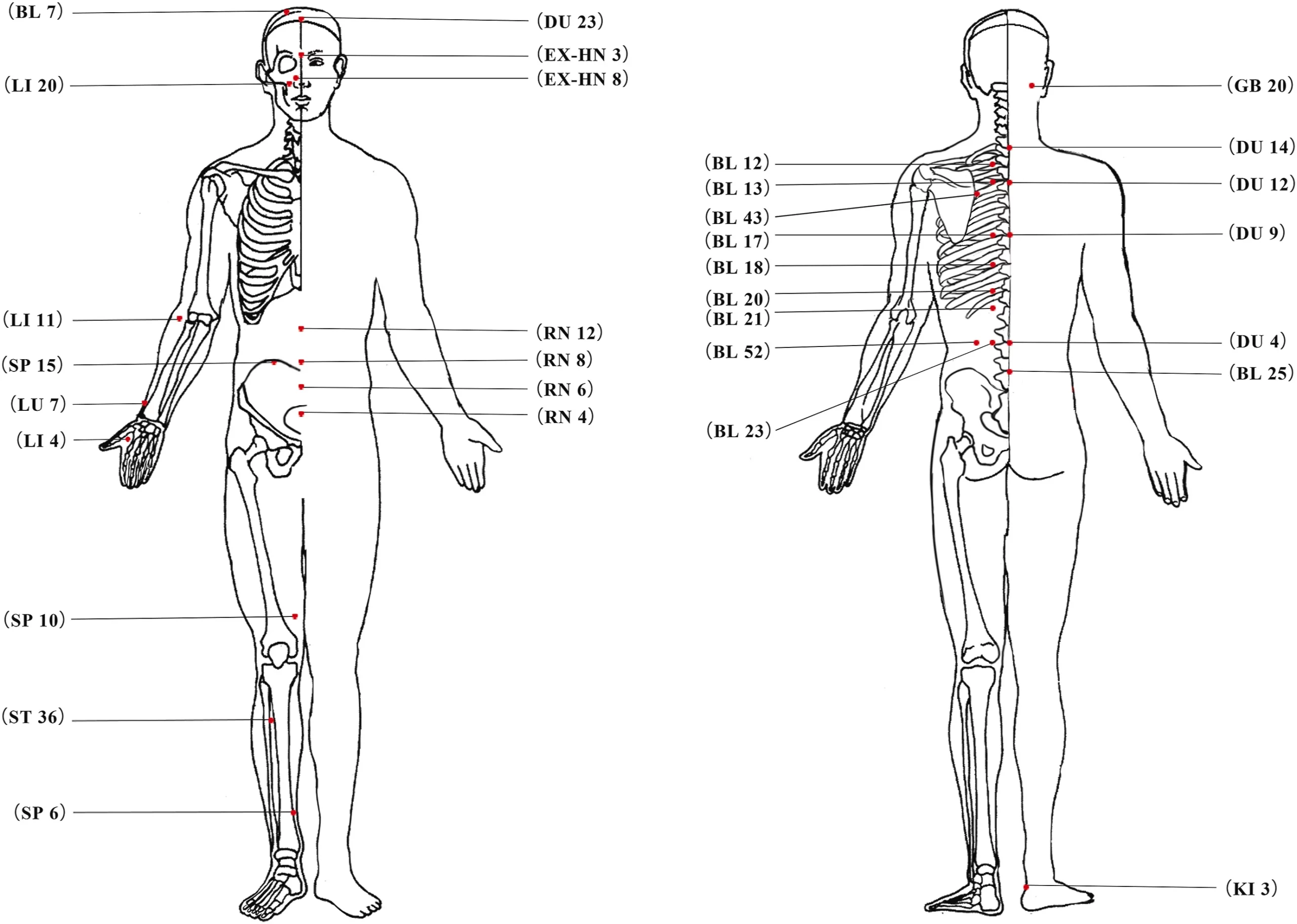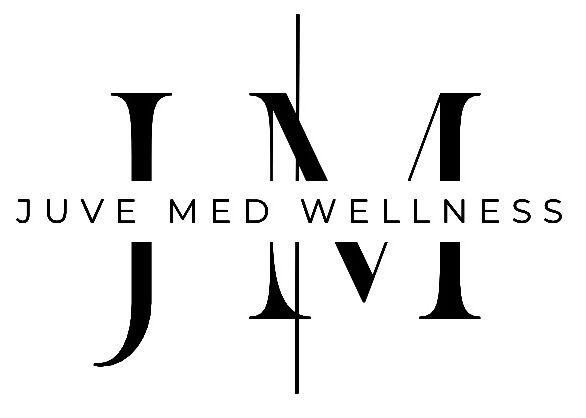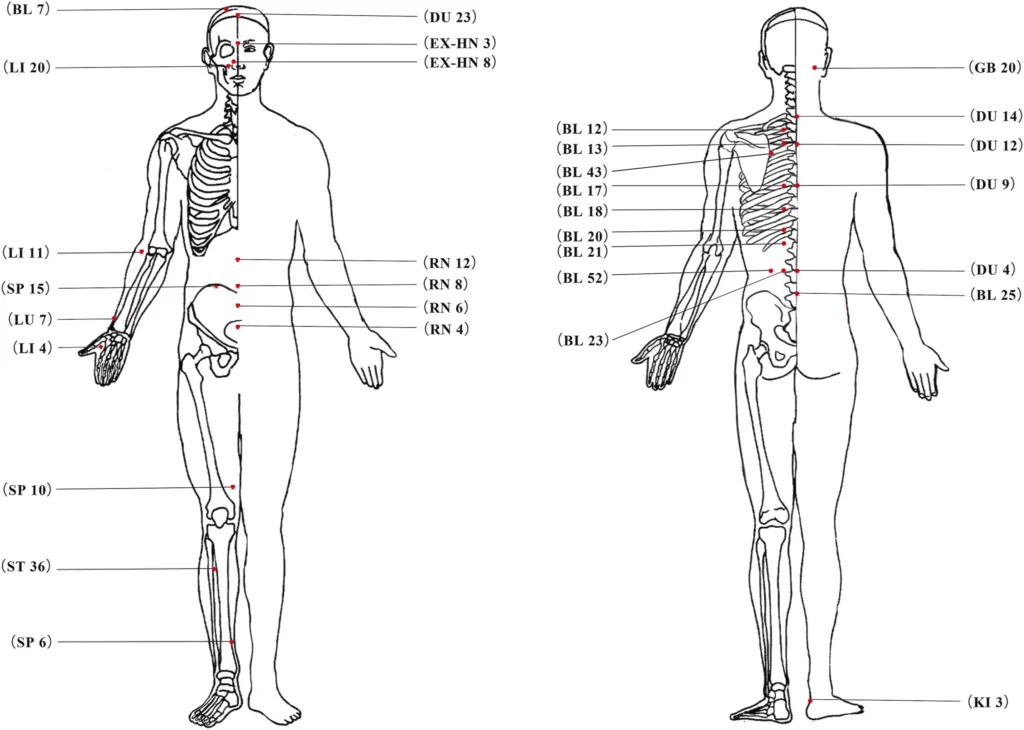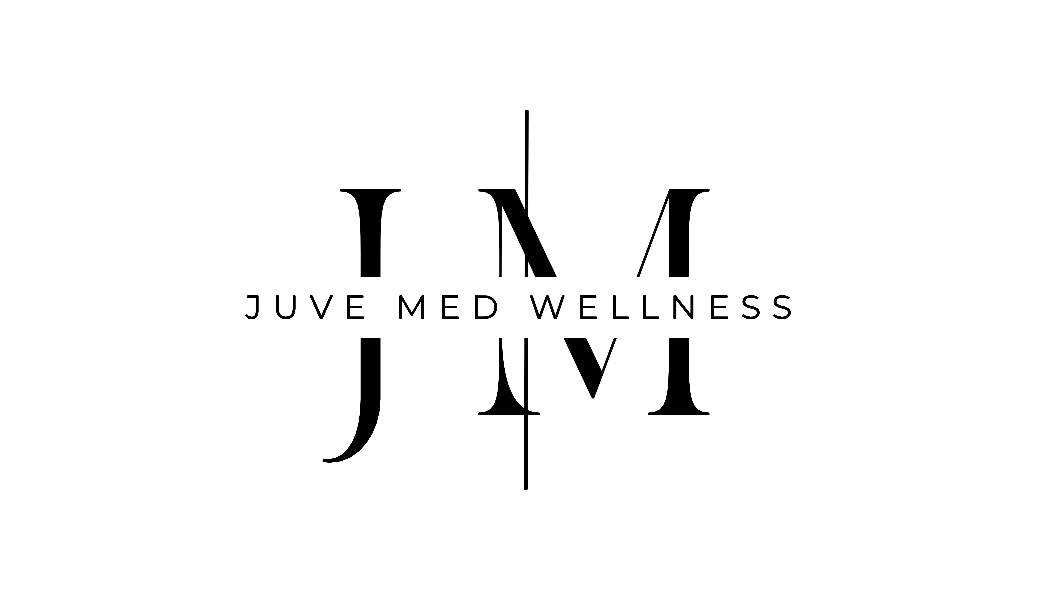Acupressure is an ancient practice based on the principles of Traditional Chinese Medicine (TCM), which relies on stimulating specific points on the body, called acupoints, to help bring the body back into balance and support general health. To begin with, if you are not familiar with this therapy, it is grounded on the idea that Qi, the body’s life force energy, flows through a network of meridians. As a matter of fact, acupressure stimulates these important acupoints and encourages the flow of Qi, activating the body’s innate healing capabilities and improving physical and emotional well-being. Therefore, similar to acupuncture, acupressure assists the body’s natural inclination to recover balance, and for that reason, it’s a popular and effective adjunct treatment for many conditions. In this case, we explore details of essential acupressure points that can help maintain balance, relieve pain, and improve the overall health of your body.
Meridians and Energy Flow
In Traditional Chinese Medicine, 14 primary meridians govern specific bodily functions and are connected to particular organ systems. As has been noted, these meridians are:
12 Organ-Linked Meridians
Each meridian corresponds to a specific organ or system and maintains its function. These meridians are Lung (LU), Large Intestine (LI), Stomach (ST), Spleen (SP), Heart (HT), Small Intestine (SI), Bladder (BL), Kidney (KI), Pericardium (PC), Triple Energizer (TE), Gallbladder (GB), and Liver (LV).
2 Extraordinary Vessels
Governing Vessels (GV or DU) and Conception Vessels (CV or Ren). These vessels store Qi and regulate its flow in the body to maintain energy balance and vitality.
As can be seen, each meridian has several acupressure points related to different physiological functions. So, acupressure, acupuncture in Newport beach, and also massage techniques stimulate these specific points and the body’s natural healing mechanisms. Consequently, when done correctly by practitioners, it promotes smooth Qi flow for physical as well as emotional health.
How Acupressure Points Works
Acupressure is applying gentle, sustained pressure to specific acupoints on the body. Practitioners use their fingers, hands, or specialized tools depending on the technique. In like fashion, acupuncture needles and massage techniques can also be used to target these acupoints. As a result, by targeting these acupoints, acupressure influences Qi flow through the meridians and balances energy and overall well-being. To clarify, free-flowing Qi supports the health of organs, tissues, and the systems through which it passes. However, blockages or imbalances in Qi flow can cause various ailments.
In addition to Qi flow, acupressure also affects other body systems. Indeed, research shows that applying gentle pressure to acupoints can release neurotransmitters, hormones, and other biochemical substances. Hence, this can relieve pain, help relax, and enhance the body’s healing abilities.
Commonly Used Acupressure Points
Digestive Health
To illustrate, here are examples of effective points:
- ST36 (Zusanli): This point boosts digestion, energy, and immune function below the knee. Good for nausea and stomachaches.
- SP6 (Sanyinjiao): Above the inner ankle, this point supports digestion, balances hormones, and furthermore relieves bloating and menstrual discomfort.
- CV6 (Qihai): Below the navel, this point strengthens abdominal organs and boosts digestive function.
- CV12 (Zhongwan): Above the navel, this point harmonizes the upper abdominal organs and relieves indigestion and stomach pain.
- BL21 (Weishu): This point supports gastrointestinal health on the back, especially for diarrhea and constipation.
- ST25 (Tianshu) and SP15 (Daheng): Near the navel, these points regulate bowel movements and relieve digestive stagnation, especially for irritable bowel syndrome (IBS).
Pain Relief and Headaches
- LI4 (He Gu / Union Valley): This point relieves headaches, facial pain, and muscle tension between the thumb and index finger. Not only is it suitable for headaches, but also for pain in other parts of the body.
- Yintang (Third Eye): Between the eyebrows, this point relieves frontal headaches, reduces anxiety, and also promotes relaxation.
- Jian Jing (Shoulder Well): On the shoulder, this relieves neck pain, muscle stiffness, and tension.
- GV20 (Baihui): At the crown of the head, this point treats headaches, promotes mental clarity, and reduces stress.
Emotional and Mental Well-Being
- LV3 (Tai Chong / Great Surge): On the top of the foot between the big toe and second toe, this point calms irritability, reduces stress, and promotes emotional balance.
- BL14: On the back, this acupoint is for emotional well-being and connects to the pericardium and emotional processing.
- BL15: Related to the heart, this point relieves anxiety, stress, and memory problems and calms the mind.
- Shen Men (HT7 / Spirit Gate): On the wrist, this acupoint is for anxiety, insomnia, emotional regulation, and sleep.
For Reproductive and Hormonal Health
- SP6 (Sanyinjiao): This point regulates menstrual cycles and reproductive health above the inner ankle and helps with cramps and hormonal imbalances.
- BL23: This acupoint on the lower back supports kidney energy, reproductive health, fertility, and libido.
- CV6 (Qihai): This point below the navel strengthens the reproductive organs and function.
All in all, these points assist in hormonal balance and reproductive well-being.

Specific Acupressure Points for Common Ailments
For Headaches
- LI4 (He Gu): Between the thumb and index finger, this point treats various headaches, including tension and sinus headaches, by improving blood circulation and reducing pain.
- GV20 (Baihui): At the crown of the head, this acupoint helps with headaches related to mental tension or stress and calms the nervous system. Altogether, both points are effective in pain management.
For Nausea and Vomiting
- P6 (Nei Guan): Three fingers below the wrist on the inner forearm. This point reduces nausea caused by motion sickness, pregnancy, or chemotherapy treatments by balancing the stomach’s Qi. As a result, nausea is lessened significantly.
For Digestive Issues
- ST36 (Zusanli): Below the knee, this acupoint enhances digestion and energy and aids nutrient absorption and overall digestive health.
- SP6 (Sanyinjiao): Above the inner ankle, this point relieves bloating, poor appetite, and digestive irregularities and harmonizes the spleen and stomach. In the same fashion, both support gastrointestinal harmony.
Safety and Precautions in Acupressure
Performing acupressure is generally safe and non-invasive. At the same time, most people can benefit from its numerous advantages. Nonetheless, keep the following safety guidelines in mind:
- Firstly, consult a trained acupressure therapist, acupuncturist, or massage therapist. With this in mind, ensure the therapist applies acupressure correctly for optimal safety and effectiveness.
- Do not apply it to open wounds or inflamed areas.
- Do not apply pressure to areas with injuries, inflamed skin, or recent surgical sites. For that reason, complications may be avoided.
- In case you’re unsure, consult a medical professional.
Pregnancy
Pregnant women should consult their acupressure therapist before treatment, since some points may stimulate labor or affect pregnancy.
Bleeding Disorders
Individuals with bleeding disorders or taking blood thinners should seek medical advice before performing acupressure. Otherwise, risk may be involved.
Medical Devices
Inform your therapist if you have a pacemaker or any other medical device, given that some acupressure techniques may interfere.
Conclusion
To summarize, acupressure points are a great tool that can benefit your general health. Acupressure is based on an understanding of Qi as the vital energy that exists within our bodies — and the idea that by applying pressure to specific points on the body, we can promote the movement of Qi to relieve pain, reduce stress, and assist the body’s natural ability to heal itself. Whether to manage digestive problems, alleviate headaches, or treat emotional conditions, locating and applying the proper acupressure points can yield tremendous gains. On the whole, though generally safe, acupressure should be done with understanding and care in the hands of a trained practitioner. So, to that end, when used thoughtfully, acupressure offers a holistic approach to maintaining and restoring balance in the body.
References:
https://www.woninstitute.edu/acupuncture-points/
https://www.healthline.com/health/acupressure-points-for-gas#when-to-see-a-doctor
https://www.mskcc.org/cancer-care/patient-education/acupressure-nausea-and-vomiting
https://www.healthline.com/health/pressure-points-for-anxiety
https://www.webmd.com/balance/acupressure-points-and-massage-treatment


